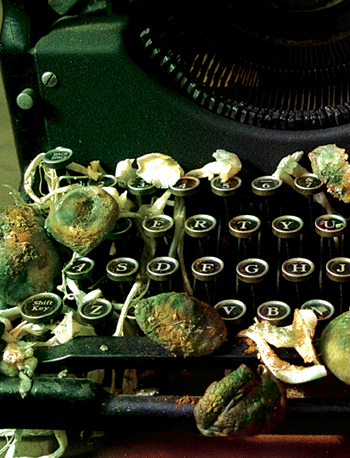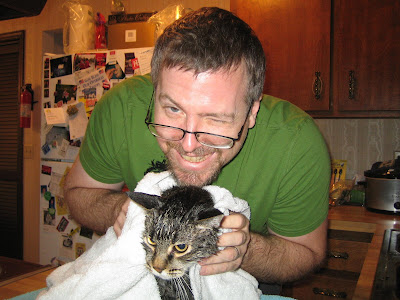Sin City, Robert Rodriguez, and Lee Horsley
Check out couple of trailers for Robert Rodriguez'* adaptaton of Frank Miller's Sin City:
Quicktime and Windows Media
* One site says that Miller is co-directing. Another says that Tarantino is the co-director.
Speaking of Rodriguez... Robert Rodriguez's 10 Minute Film School
--------
About a year and a half ago I stumbled across a wonderful book called The Noir Thirller which traces the development of noir as a literary form. The book's author, Lee Horsely, is a noir maven. She runs a site, Crime Culture, which is a repository for information on all things noir - reading lists, academic papers, links, analyses, and courses. (Lee, *ahem* Dr. Horsley, teaches several courses on noir and crime fiction at Lancaster University in the U.K.)
She is a busy woman, so I'd like to send her a big "Thanks!" for taking time during her holidays to answer a few questions:
What sparked your interest in Noir?
I suppose that like many others of my generation (I was born in 1944), my interest in this sort of writing and film-making was sparked long before the label 'noir' had come into general use. I remember when I was very young being fascinated by the 'tough guy' stories in old magazines my father had around (Argosy, Dime Detective, Saturday Evening Post) and, when I was a bit older, loving films like Maltese Falcon, Touch of Evil and Double Indemnity. Then when I came to live
in Britain (in the mid-60s) I discovered some of the writers who were much more highly regarded (and more available) in Europe than in the States (Chester Himes and Patricia Highsmith were particular favourites of mine). But it was only in the 70s and 80s, with the production of so many great neo-noir films, that I reflected on the 'noir' qualities of this whole range of literary-cinematic preferences, and started to think in a more connected way about the links between hard-boiled
writing, film noir and other kinds of literary noir.
How did your book "The Noir Thriller" come about?
It was another decade or so before this 'spare time' fascination with noir started to come together with my academic writing. I had been doing research on 20th-century political fiction, and a book I wrote for Longman (Fictions of Power) had a chapter on the interwar thrillers of Graham Greene and Eric Ambler. My strongest academic interest has always been in satire and the various ways in which literature can be used for the purposes of socio-political critique, and in writing about
the 30s thriller, I started to think about the effectiveness of the critique developed in 'dark' crime fiction. Then I stumbled on Jim Thompson and read every novel of his I could track down - after which I thought, Why not a book just on literary noir? I drafted a proposal, and Clive Bloom (general editor of the Crime Files series) encouraged me to make it as wide-ranging a study as I could - not just limiting myself to books currently in print but filling out the whole picture.
And after a few very enjoyable years of obsessive book collecting and of reading some amazing writers I'd never known about before (Harry Whittington, Gil Brewer, David Goodis, Charles Williams, Day Keene...) I was lucky enough to get a year's sabbatical to write about them and to try to make their work known to a larger audience.
In your book and on your site, between the fiction, non-fiction studies, and true crime material, you deal with some pretty bleak stuff. Have you come across anything that's made you go, "That's enough. That's crossed the line."
I tend to have an 'anything goes' view - an opposition to censorship and 'line drawing' in all its forms, partly, no doubt, a reaction against a certain kind of middle-American moralising and intolerance that deeply disturbed me when I was growing up in suburban Minnesota (and that I find even more disturbing, at a distance, in contemporary America). But the question of line-drawing probably surfaced most for me when my children were growing up - arising in the form, are there things that 'go too far' for them to read/see? And yes, if I think back, there undoubtedly were a few such things - the example I remember most clearly being American Psycho. A brilliant book, one of the most effective ever uses of crime fiction to create excoriating social satire. But I do recall saying very firmly, 'Yes, it's a very good book...but not something you should read. Not just yet, anyway.'
What books and films would you recommend for someone who is new to the genre?
Because I teach two courses on crime fiction/film, I have the fun of making this sort of recommendation every year. Some of the choices I make, of course, are to do with illustrating a particular phase of generic development (I always start my noir thriller course with Stranger on the Third Floor, just because it illustrates so much about the origins of film noir in expressionism). But most of the things I
select are chosen just because I know they will make a real impact on readers new to the genre - Hammett's Maltese Falcon (and the Huston
film, of course), Chandler's Farewell, My Lovely, Jim Thompson's The
Killer Inside Me, Highsmith's The Talented Mr Ripley or Strangers on a Train (coupled with Hitchcock's film), something from Himes' Harlem
cycle, Mosley's Devil in a Blue Dress, Hjortsberg's Falling Angel, Behm's Eye of the Beholder - combined with films like Out of the Past, Double Indemnity, Vertigo, Get Carter, The Grifters, Twelve Monkeys, The Man Who Wasn't There. The selection keeps changing because there really is so much to choose from! I've recently finished writing
another book, called Twentieth Century Crime Fiction (due out next August), and in the process of writing this came across all sorts of other novels I plan to add to future courses - Charlotte Carter's Walking Bones, Jason Starr's Cold Caller, John Ridley's Love is a
Racket, Lisa Cody's Monkey Wrench...sorry, I'd better stop there - it's a list that could go on for several pages!
Finally, What's the most "noir" thing you've done?
Well, actually I'll have to admit that my liking for noir is a lot to do with the fascination of things most removed from your own experience (I never understand readers who insist on being able to 'locate themselves' in a book before they can be interested in it - reading, to me, seems all about the whole intriguing business of encountering difference--or indeed darkness, depravity and deviance!). But I suppose, at a stretch, I can at least claim some links with the American tough guy ethos that fed into the development of cinematic and literary noir. My father's magazines full of hard-boiled stories went with his passion for 'roughing it' - hunting, fishing and camping in the north woods of Minnesota, teaching me to shoot at an early age (I was in consequence a state and national rifle champion when I was in my teens), insisting that if I shot an animal I had to skin it and eat it (being made to skin and clean a porcupine I carelessly shot when I was about 8 - that was a fairly hard-boiled experience!). But otherwise (though I of course aspire to being cynical and tough-minded) I really lead a very tame, unadventurous and un-noir life!
---
-N/A















